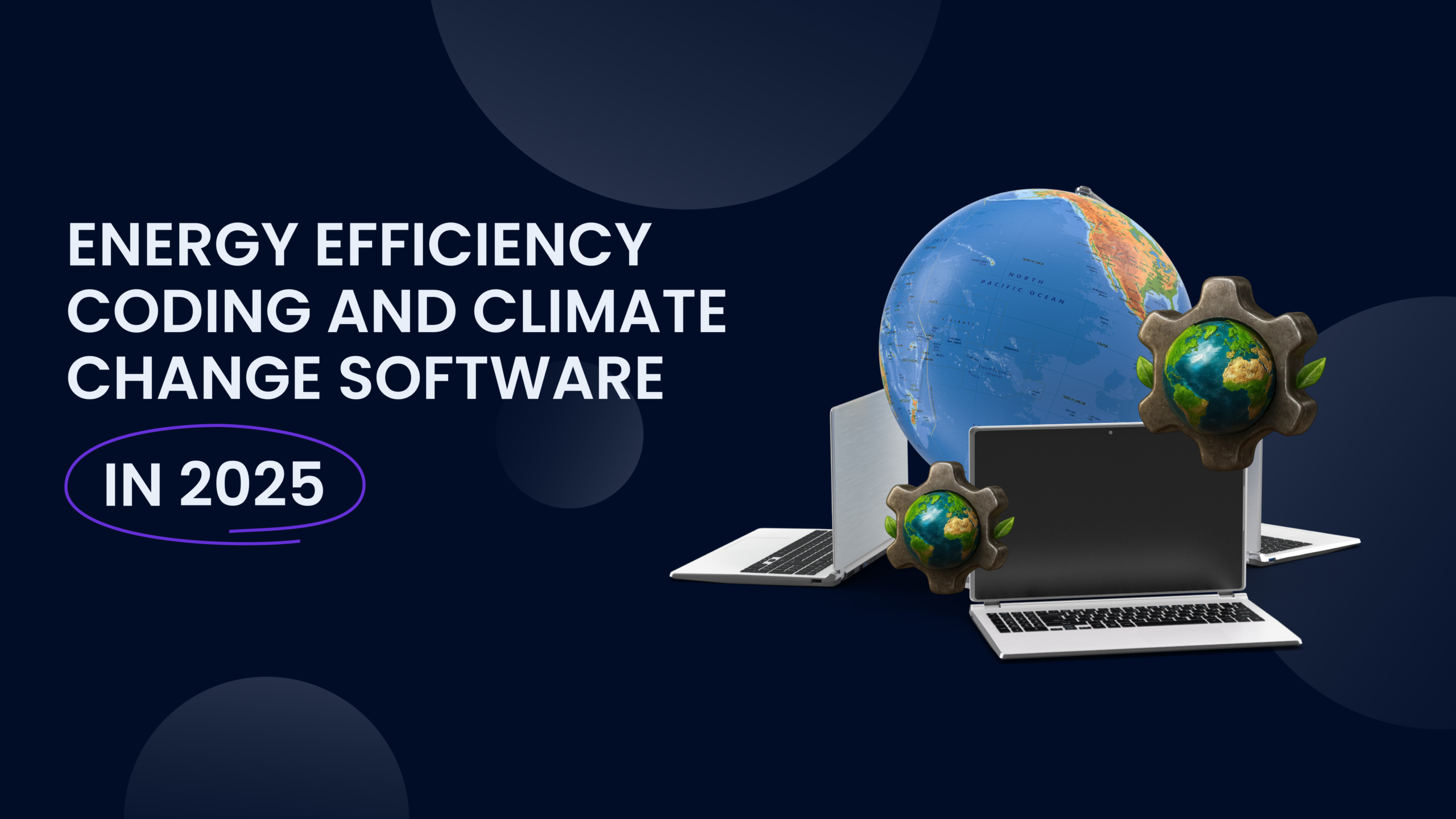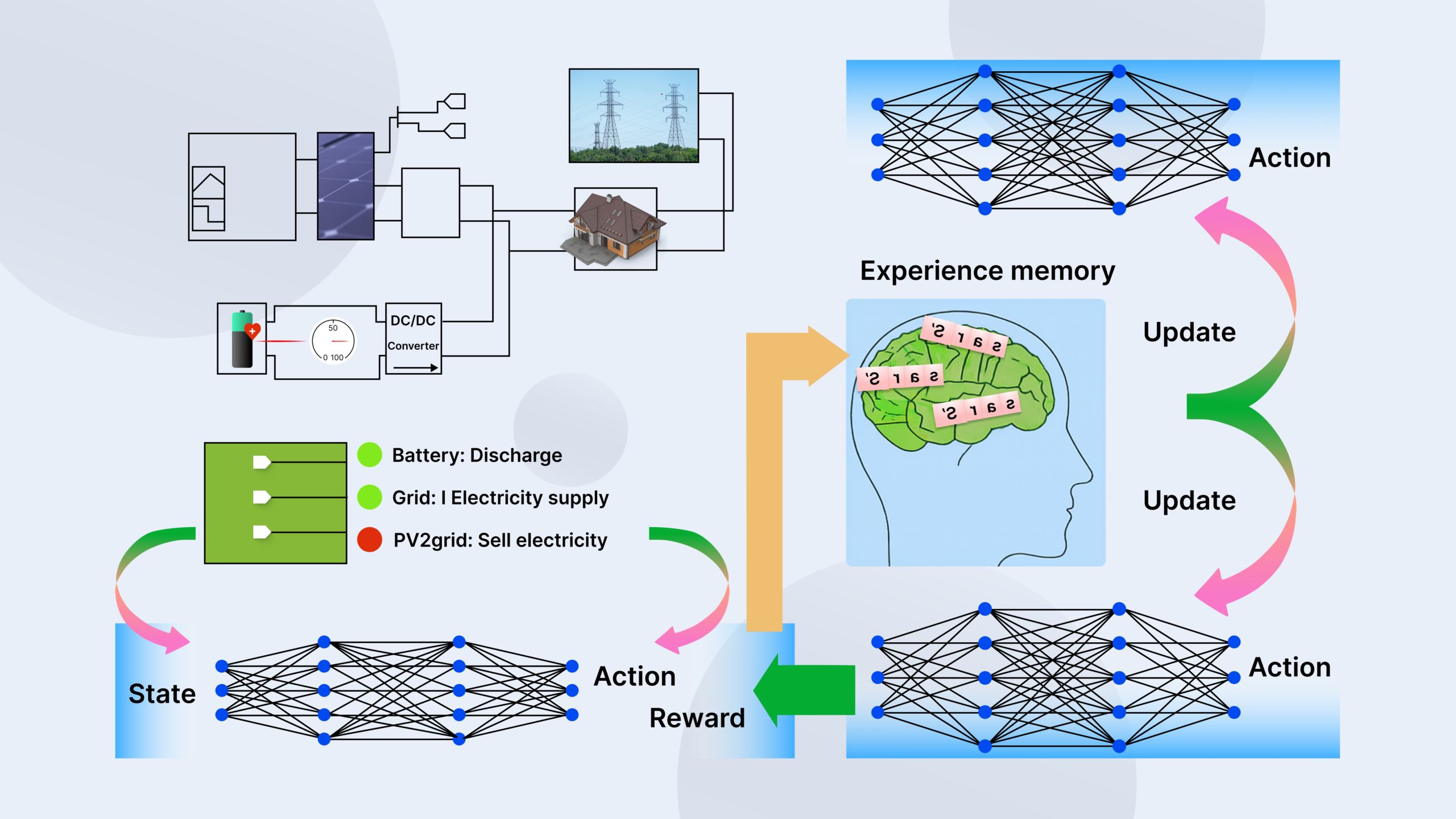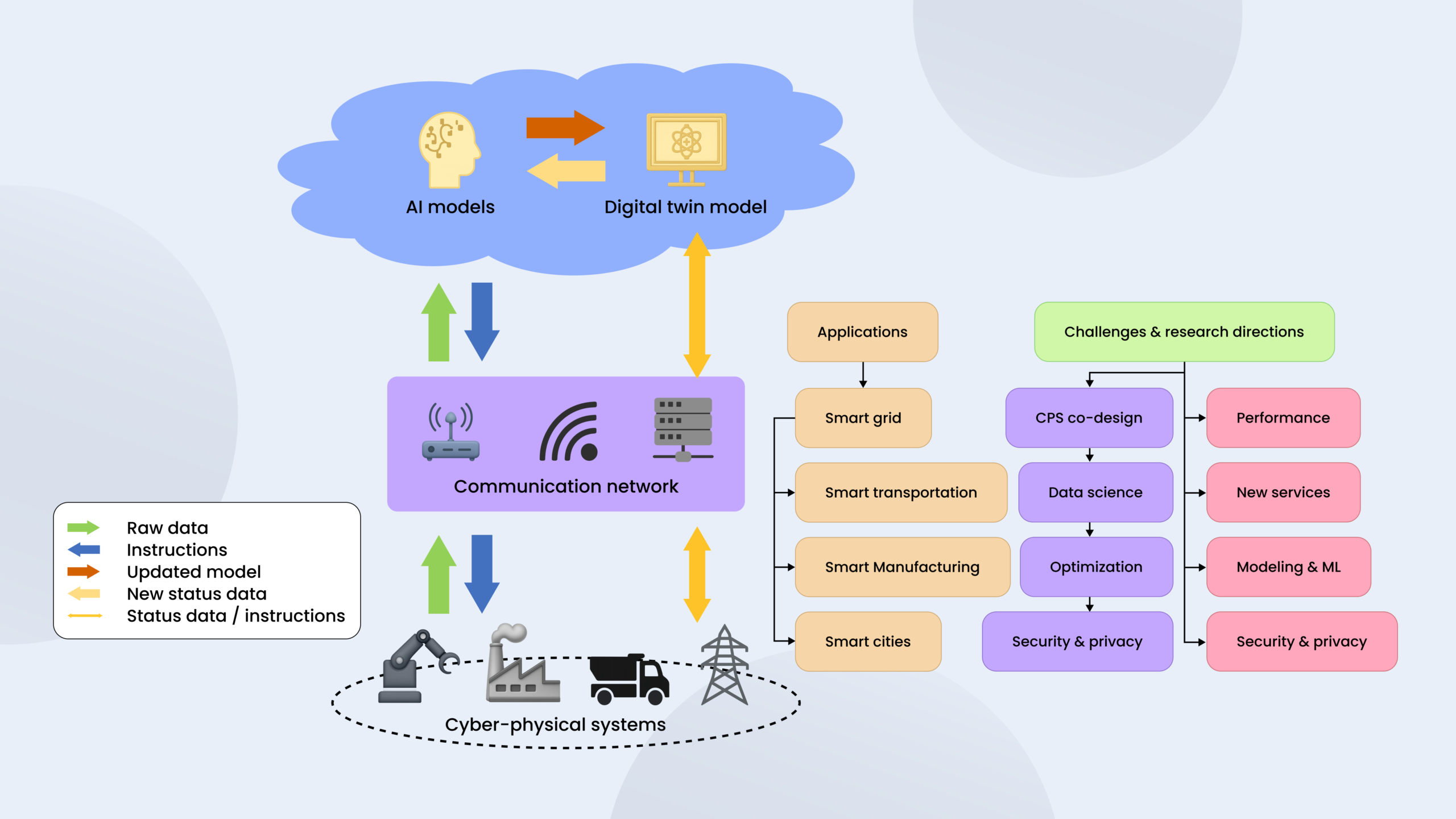
Did you know that software itself can affect energy waste and energy efficiency? Most people think of servers and power-hungry devices when it comes to digital energy use, but software itself plays a major role, too! MWDN experts are aware of this and shed some light on climate change software and energy-efficient coding.
According to a 2022 report by the International Energy Agency, data centers already account for nearly 1-1.5% of global electricity consumption, and the software running inside them significantly influences how that energy is used. In these circumstances, green software and optimization tools can invest in energy efficiency in manufacturing, logistics, real estate, and more.
Content:
- What is energy-efficient coding?
- How can software speed up energy efficiency across sectors?
- Software’s role in modeling and optimization
- Practical strategies for energy-efficient software development
- Now, we are in 2025: Key principles of responsible AI development
- The role of the climate change software engineer
The way we write and deploy software can be one of the most underrated levers in addressing the climate crisis, and here’s how.
What is energy-efficient coding?
At its core, it’s how we design, write, and deploy code that uses minimal computing power, memory, and bandwidth to perform its functions. Energy-efficient software development has become a quiet but essential front in the fight against climate change.
Why does it matter?
First, the environmental stakes are high. Every inefficient loop, memory leak, or bloated application piles up into wasted processor cycles and, ultimately, more carbon emissions, especially when scaled across millions of devices or data center workloads. To reduce this waste, you can optimize software for energy efficiency, which will help to shrink the carbon footprint of digital infrastructure.
Second, there are economic upsides. For businesses, lighter code means reduced cloud compute costs and lower energy bills. For consumers, it means apps that don’t drain batteries and devices that last longer.
The broader impact is just as significant. Efficient code extends the usable life of hardware, slows down the replacement cycle, and decreases pressure on supply chains and e-waste systems. In that sense, energy-efficient development supports the principles of a circular economy: fewer resources used, less waste produced, and more sustainable digital growth.
How can software speed up energy efficiency across sectors?
Energy efficiency software becomes a cornerstone of sustainable development across industries, quietly reshaping how buildings, factories, transportation networks, and even personal devices consume energy. These tools optimize operations, actively reduce emissions, and conserve resources in ways that are measurable and impactful.
In the construction industry, software uses data from IoT sensors, weather forecasts, and AI algorithms to manage HVAC systems, lighting, elevators, and even window shades. By adapting operations to real-time occupancy and environmental conditions, these tools decrease unnecessary energy use and deliver significant cost savings. For example, smart thermostats and automated lighting systems can drastically cut a building’s energy usage (up to 30% according to some sources).
- On the industrial side, energy efficiency software tools change the way factories operate. These systems monitor everything from conveyor belts to robotic arms, identify energy waste, and adjust equipment usage in real time.
- Supply chains also benefit, as software facilitates logistics and minimizes overproduction and transportation inefficiencies.
- For heavy industries like steel or chemicals, these optimizations can reduce energy use per unit of output by double-digit percentages.
- Transportation also undergoes a digital transformation. Fleet management platforms use real-time traffic data and predictive analytics to optimize delivery routes and cut fuel consumption. Traffic systems dynamically adjust traffic lights and signage to ease congestion and lower fuel use and emissions.
Even at the individual level, embedded in smartphones and laptops, these tools make a difference. Efficient apps and operating systems extend battery life and minimize processor usage, indirectly reducing the power load on charging stations and data centers. As devices become more powerful, these micro-savings accumulate to have a significant global impact.
Software’s role in modeling and optimization
Energy efficiency modeling software affects the way we plan and manage energy use in complex environments: from single buildings to industrial sites, and even entire cities. By simulating how energy flows through systems, these tools can predict consumption patterns, identify inefficiencies, and suggest targeted improvements.
A key enabler of this progress is the integration of predictive analytics and machine learning technologies, which are rooted in the same foundations as climate change modeling software.
Predictive analytics and machine learning
These technologies analyze historical and real-time data to forecast future energy usage. For example, smart grids use machine learning to anticipate demand spikes and optimize electricity distribution. In industrial settings, predictive models can detect equipment wear and predict maintenance needs, minimizing downtime and energy waste.

Source: Sketch of smart grid optimization using a deep neural network-based reinforcement learning algorithm from Smart Grid Optimization by Deep Reinforcement Learning over Discrete and Continuous Action Space
Another example of energy efficiency software tools is the use of digital twins.
Digital twins for efficiency
Digital twins are virtual replicas of physical systems that simulate real-world behavior in real time. Digital twins help engineers test and refine optimization strategies without disrupting actual operations.

Source: Graphical abstract from Digital Twin—Cyber Replica of Physical Things: Architecture, Applications and Future Research Directions
For example, facility managers can simulate how different HVAC settings impact energy use before implementing changes. Manufacturers can model production lines to reduce energy consumption and increase throughput.
These technologies can turn energy efficiency from a manual, reactive process into a continuous, data-driven optimization loop. With the right combination of energy efficiency modeling software, machine learning, and digital twins, we can cut emissions and costs.
Practical strategies for energy-efficient software development
Energy-efficient software development starts at the algorithmic level. Efficient algorithms reduce CPU cycles and memory usage, which in turn lowers the energy demands of computing systems. Here are some of the strategies a climate change software engineer focused on sustainability can use to optimize their code:
Resource management
Every byte transmitted or processed consumes power, especially at scale. Efficient I/O operations and smart caching strategies help reduce both latency and electricity use. These are the steps resource management involves.
- Memory management. Making sure the application uses only as much memory as needed, and releasing it when it’s no longer in use.
- CPU usage. Code optimization so it doesn’t consume excessive processor cycles.
- I/O efficiency. Minimizing the time spent on input/output operations (like reading from disk or network requests) through buffering, caching, or asynchronous handling.
- Cloud resource optimization. Virtual machines, containers, and serverless functions management to avoid over-provisioning.
- Energy awareness. Designing software with lower power usage in mind, especially important in mobile, embedded, or edge devices.
Optimization of cloud resource allocation
This practice makes sure that cloud computing resources are used as efficiently as possible. Here’s how it works:
- Right-sizing resources. One of the most common mistakes in cloud usage is reserving too much computing power “just in case.” Right-sizing involves analyzing actual workloads and adjusting virtual machine sizes or containers to match real needs.
- Auto-scaling. AWS, Azure, and Google Cloud allow applications to automatically scale up during high demand and scale down during low usage. Dynamic scaling prevents waste and supports energy efficiency in real-time.
- Serverless computing. With serverless functions (like AWS Lambda, Google Cloud Functions), you don’t manage servers at all. You simply run code in response to events, and you’re only billed for the exact time your code runs.
- Cloud provider sustainability. Many cloud providers now offer data centers powered by renewable energy. By choosing regions with better sustainability metrics or using carbon-aware computing and scheduling, you can reduce your carbon footprint. Microsoft Azure and Google Cloud, for example, offer dashboards showing the carbon impact of your workloads.
- Workload scheduling. Non-urgent workloads (batch jobs or model training) can be scheduled at off-peak times or when the energy mix is greener (more solar/wind on the grid). This practice, sometimes referred to as carbon-aware programming, aligns digital activity with environmental responsibility.
Apart from these strategies, there’s also things like lazy loading and asynchronous operations, which ensure that only necessary code and assets are executed or loaded when required. This reduces peak resource consumption and flattens power demand, particularly useful for web and mobile apps.
Now, we are in 2025: Key principles of responsible AI development
- Fairness and non-discrimination. AI systems should treat all individuals fairly, avoiding biases based on race, gender, age, or other protected attributes. Biased training data or poorly tested models can reinforce or even amplify societal inequalities.
- Transparency and explainability. AI should be understandable: users and developers alike should know how decisions are made. This means building models that can be explained or at least audited, especially when they impact human rights or access to services.
- Privacy and data governance. Responsible AI respects user privacy and uses data ethically.
- Safety and robustness. AI systems must be tested for reliability, especially in critical sectors like healthcare, finance, or autonomous vehicles.
- Accountability. There should always be a human accountable for an AI system’s decisions and actions.
The role of the climate change software engineer
Do you feel like the need for a new kind of developer is emerging, the climate change software engineer? These people are the link between code and climate; they can design systems that prioritize performance and sustainability equally. Their role isn’t limited to optimizing software for speed or scale; they must also consider how each design choice affects energy consumption and environmental impact.
Collaboration between the tech industry and policymakers is more important than ever. Governments and regulators are starting to recognize the importance of sustainable software practices. Standards, certifications, and financial incentives can accelerate the adoption of energy efficiency software solutions, especially in industries where outdated code and infrastructure still dominate.
Driving change requires action at every level. Developers should be empowered to make energy-smart decisions, companies must prioritize sustainability in their product roadmaps, and consumers can influence the market by choosing efficient tools and services! The transition to a greener tech ecosystem begins with awareness and the people writing the code. Every climate change software engineer, every company choosing an energy efficiency software solution, plays a part in shaping a cleaner, smarter world.
Looking for a specialist with strong sustainability beliefs capable of developing your software in an environment-aware manner? MWDN specializes in finding and hiring tech talent you’re looking for: anywhere in the world, and according to your budget. Let’s chat, so you can find out more about the perks of MWDN for your business!
Content
- 1 What is energy-efficient coding?
- 2 How can software speed up energy efficiency across sectors?
- 3 Software’s role in modeling and optimization
- 4 Practical strategies for energy-efficient software development
- 5 Now, we are in 2025: Key principles of responsible AI development
- 6 The role of the climate change software engineer

